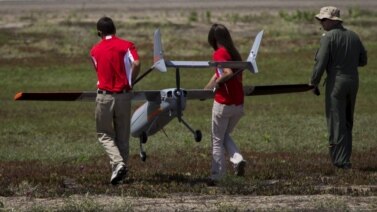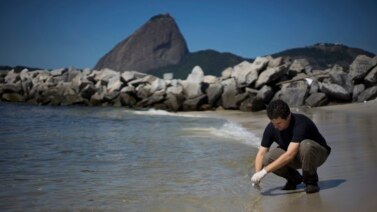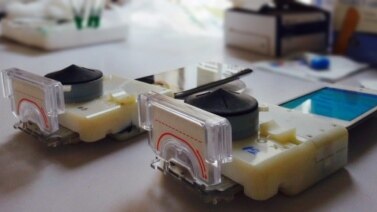The dry conditions in California are good for people who like to swim in the Pacific Ocean. Because of the drought, there is less water runoff from cities into the ocean. As a result, the ocean water is cleaner. But pollution remains a problem in other areas, including popular beaches.
Angelo Bellomo works for the Los Angeles County Department of Public Health.
“When we have runoff from the urban environment, it could be carrying with it contamination due to animal waste (and) sewage overflows; and if those enter the beaches through the normal pipes that terminate in the ocean, you want to avoid contact with water during those periods.”
He adds that people could become infected with a number of diseases from swimming in polluted ocean water.
Public health officials are looking for a fast way to identify water quality levels along the California coast. Currently, they use laboratory tests. If the tests show the quality is poor, warning signs are placed along the coastline. But because lab workers need more than a day to test the water, the information on the sign can be outdated.
Leslie Griffin works for an environmental group called “Heal the Bay.” She says the current warning system is not very helpful.
“Right now it takes 18 to 24 hours to get those water quality results, but we think that that is a little ridiculous because we want people to know the day of when they are going in the water whether or not they can be getting sick.”
Until lab tests can be completed faster, researchers in California are using what they call a “predictive modeling system.” The system makes an educated guess about water quality. Heal the Bay says the system can make a prediction about water quality in as little as 15 minutes.
Researchers use computers to gather information about the environment. The data includes wind speed and direction, information about ocean waves and recent bacterial contamination. Because each beach is different, computer models are created for each one. The researchers then use the data to predict the possible quality of the water that day. The process is called “Nowcasting.”
Angelo Bellomo says the predictive modeling system looks promising.
“We think that the modeling that we have seen so far is generally more accurate than the testing that we are doing, and the reason for that is that even though it is a model and its predicting water quality, it is more timely.”
Hong Kong and the American state of Ohio have similar methods of predicting water quality.
I’m Marsha James.
Elizabeth Lee reported on this story from Los Angeles. Christopher Jones-Cruise adapted it for Learning English. George Grow was the editor.
Words in This Story
runoff – n. water from rain or snow that flows over the surface of the ground into streams; water from cities that flows into the ocean
contamination – n. the state of being dangerous, dirty or impure because something harmful or undesirable has been added
sewage – n. waste material that is carried away from homes and other buildings in pipes
terminate – v. to end in a given way or at a particular place
outdated – adj. no longer useful or acceptable
ridiculous – adj. extremely silly or unreasonable
How do officials in your country test water quality? We want to hear from you. Write your thoughts in the comments section.





